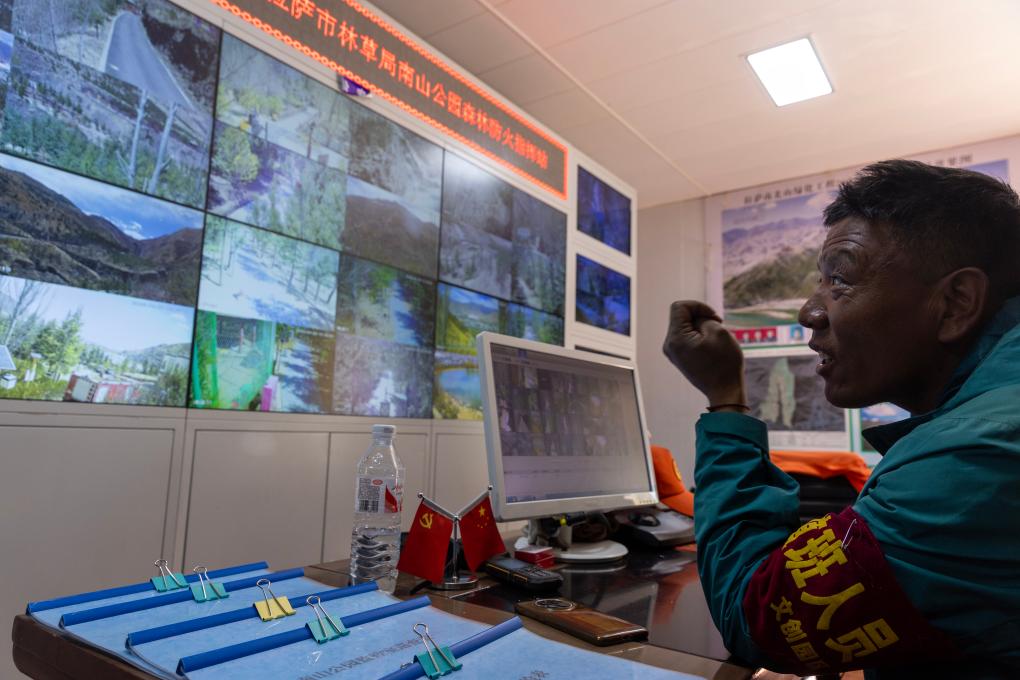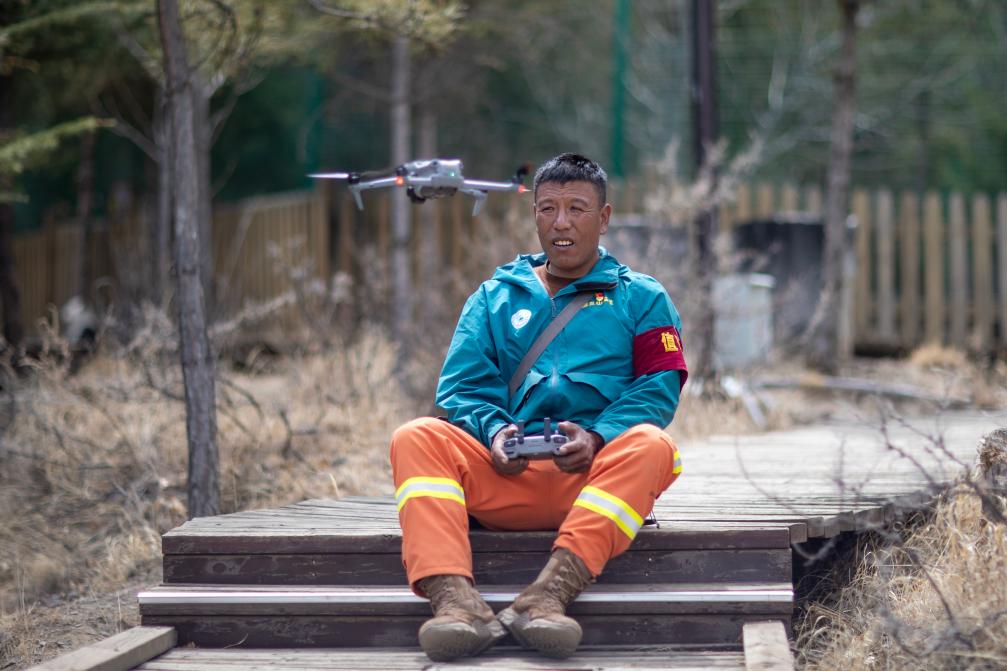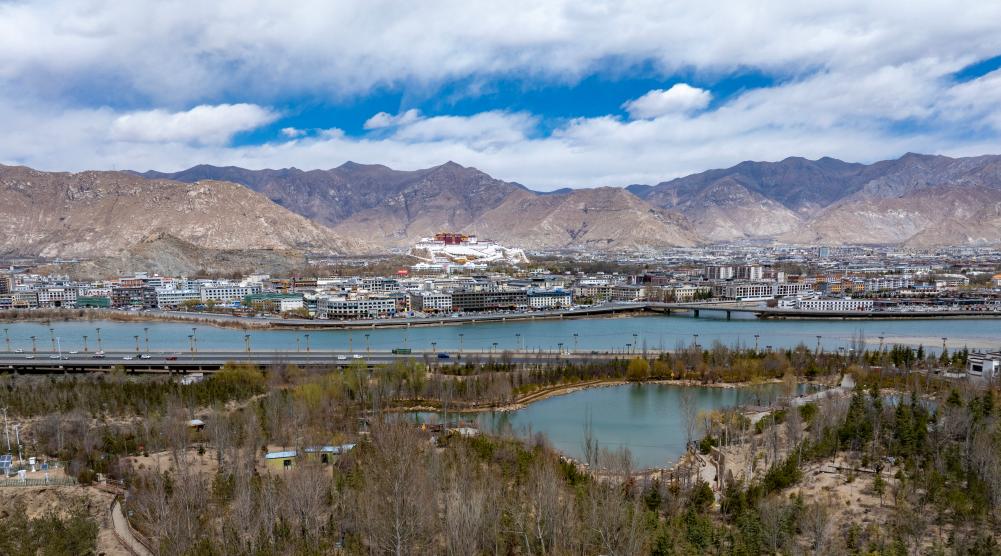Xinhua News Agency, Lhasa, March 21, Title: Lhasa, Tibet: The 13-year "Nanshan Love" by Forest Ranger Zhaxi Qupei
Xinhua News Agency reporters Liu Zhoupeng, Jiang Fan, and Solandeji
Early in the morning, in the Nanshan Park of Lhasa, the park forest ranger Zhaxi Qupei came to the monitoring room early and watched the forest that he had guarded for 13 years through dozens of surveillance images. He not only had to monitor the vegetation conditions in various places, but also organized tree planting, watering, pest control and other work to ensure that the trees thrive.

Thaxi Qupei, a forest ranger in the Nanshan Park Park in Lhasa, is observing the situation in various places in the park in the monitoring room (photo on March 20). Photo by Xinhua News Agency reporter Jiang Fan
"These trees are like my children. I feel full of joy when watching them grow up day by day." Zhaxi Qupei gently caressed a small green pine tree in the park and told reporters that the initial tree species have naturally reproduced "tree generation". This pine tree is the third generation and has grown here for 3 years. Oil pine, white pine, orchid cypress... There are more than 120 tree species growing in Nanshan Park, and Zhaxi Qupei has the name of each tree as its own.
Lhasa is located in a narrow river valley. The Lhasa River winds through the city, and the southern and northern mountains on both sides are rolling. To the south of the Potala Palace, the green Nanshan Mountains face each other across the city, and the shrubs and trees in the mountains are arranged in an orderly manner, full of greenness.
"More than 10 years ago, the mountain was bare, with wind blowing sand and dust, and even birds were reluctant to stay." Zhaxi Qupei recalled, "Now, walking in the mountains and forests, you can hear the responses of various birds by blowing a whistle, as if you are talking to people."
In order to curb grassland degradation, land desertification, and improve residents' living environment, Lhasa City launched the Nanshan afforestation and greening project in 2012. By planting trees, the former barren mountain became Lhasa Nanshan Park in five years. After continuous greening, more than 800,000 trees have been planted in Nanshan Park, with afforestation area of more than 4,350 acres. In 2021, the greening project of Lhasa’s North and South Mountains was officially launched. As part of the project, Nanshan Park has become the first representative project of large-scale ecological construction and restoration in the river valley area in Tibet.
Because the mountain is steep, the saplings can only be transported from the foot of the mountain at an altitude of 3,700 meters to every corner of the mountain. The highest point is more than 4,100 meters above sea level, which is time-consuming and labor-intensive, and there are not many saplings transported in a day. Survival of saplings is also a major problem. "At that time, we could only rely on manual watering of water pipes. In winter, the water pipes were often frozen and blocked, and it was difficult for the seedlings to survive." Zhaxi Qupei recalled.

Thaxi Qupei, a forest ranger in Nanshan Park, Lhasa, is operating the drone (photo on March 20). Photo by Xinhua News Agency reporter Jiang Fan
Now, technology has injected new vitality into the ecological construction of Nanshan Park, and drone transportation has become one of the ways to transport trees. Last year, Zhaxi Qupei obtained a professional agricultural drone operation certificate and was able to skillfully control large drones to transport saplings directly to the towering and steep green planting points. It can transport saplings weighing 70 to 80 kilograms up the mountain at a time, greatly improving efficiency.
Modern irrigation equipment also makes tree maintenance more efficient. "Now, the points on the mountain can not only be mechanized and automatically sprinkled, but we will also drive a sprinkler truck to the mountain to water it. We can water more than 1,000 trees a day, and the trees are growing better and better." Zhaxi Qupei said with a smile.
Taxi Qupei often talks with his son Yixi Pingcuo, who is studying in Tianjin. Whenever his son on the other end of the screen is worried that he is busy with work and doesn’t have time to go home to rest, Taxi Qupei always answers: "This is my second home."

Potala Palace taken from Nanshan Park in Lhasa (photo on March 20, drone photos). Photo by Xinhua News Agency reporter Zhuang Yunkai
Local tourist Luo Zhuo Nima stood on the observation deck and looked at him. He said that the scene in front of him was completely different from the Nanshan Mountain he remembered. "With so many trees, Lhasa has become more vibrant," said Luo Zhuo Nima.
Data shows that in 2024, 177,200 mu of greening in the north and south mountains of Lhasa added, and the survival rate of seedlings in 38 afforestation areas reached more than 92%; more than 1.3 million square meters of garden greening were completed, and more than 1.8 million square meters of urban greening were added, and the city's excellent air quality rate was firmly among the forefront of key cities in the country.